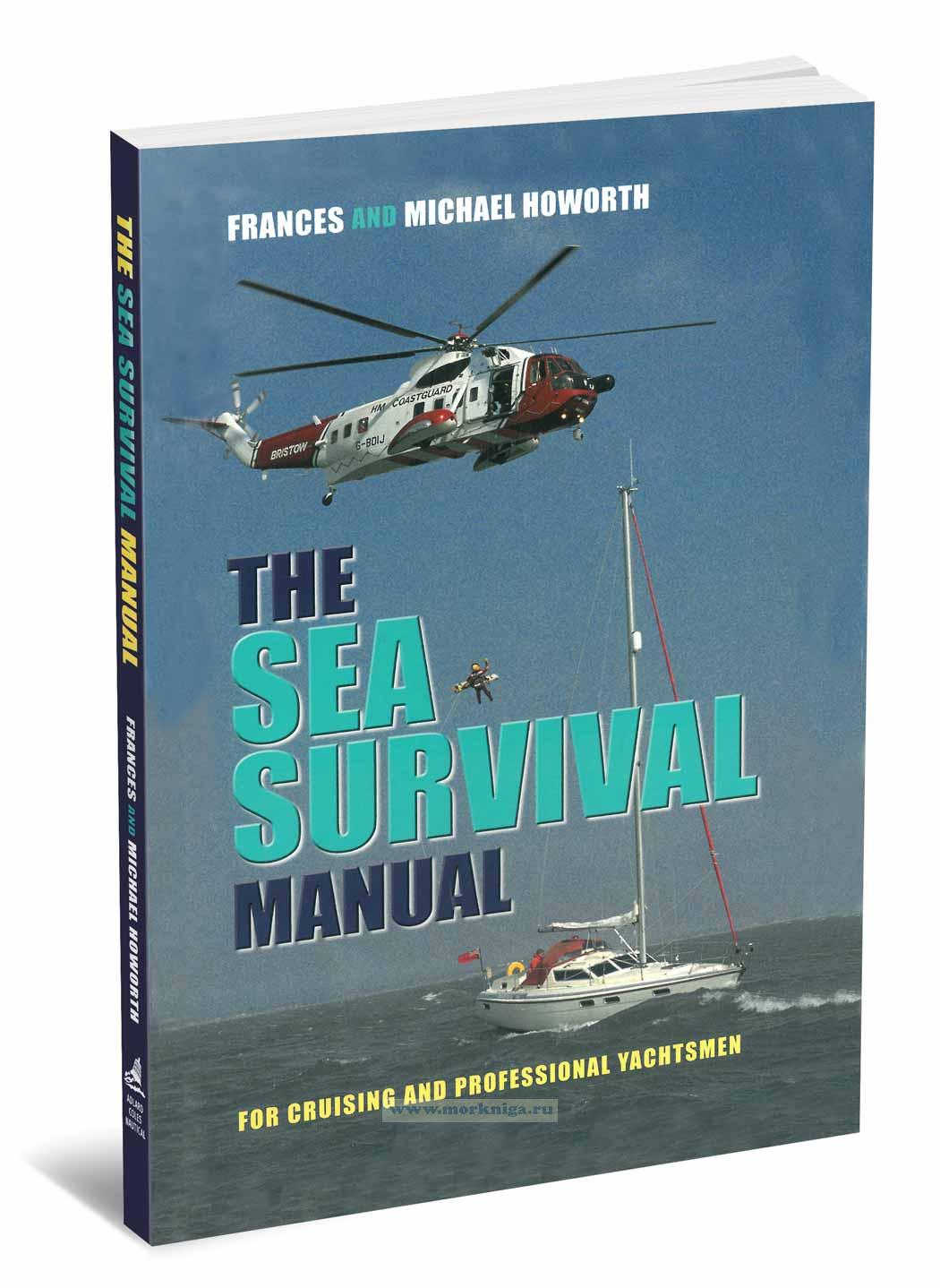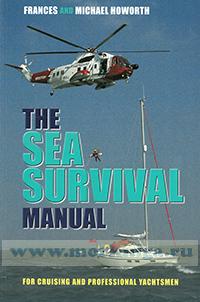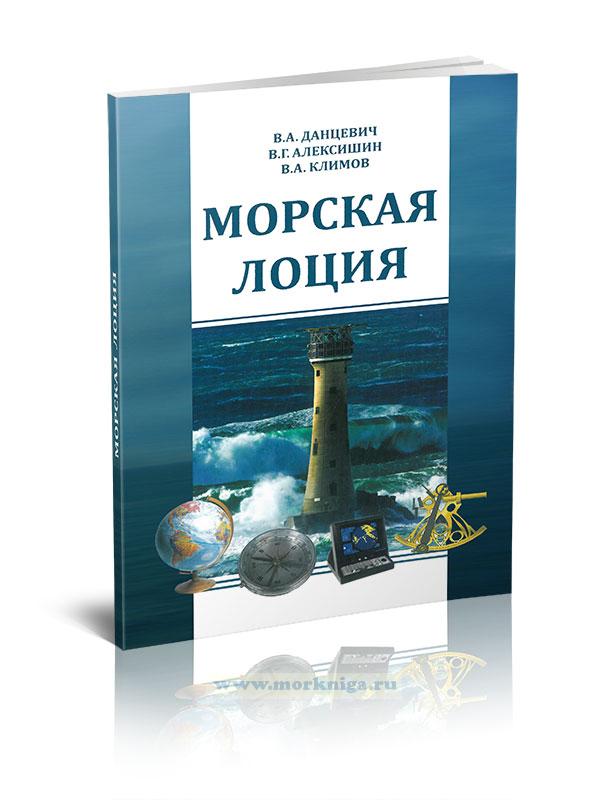The Sea Survival Manual
This book is written especially for those who sail aboard pleasure vessels of any size, whether sail, motor or both. In the UK, a 'pleasure vessel' is defined as:
a) a vessel which at the time it is being used is
(i) • in the case of a vessel wholly owned by an individual or individuals used only for the sport or pleasure of the owner or the immediate family or friends of the owner; or
• in the case of a vessel owned by a body corporate used only for sport or pleasure and on which the persons are employees or officers of the body corporate, or their immediate family or friends; and
(ii) on a voyage or excursion which is one for which the owner does not receive money for or in connection with operating the vessel or carrying any person, other than as a contribution to the direct expenses of the operation of the vessel incurred during the voyage or excursion;
b) • any vessel wholly owned by or on behalf of a members' club formed for the purpose of sport or pleasure which, at the time it is being used, is used only for the sport or pleasure of members of that club or their immediate family; and for the use of which any charges levied are paid into club funds and applied for the general use of the club; and
• in the case of any vessel referred to in the paragraphs above no other payments are made by or on behalf of users of the vessel, other than by the owner.
A pleasure vessel of 13.7m (45 ft) or more in length is classified as a Class XII vessel in the UK. A 'pleasure vessel' that carries more than 12 passengers ceases to be a UK Class XII vessel, while any size of yacht that is used commercially, for sport and leisure, such as charter boats, ceases to be a 'pleasure vessel'. Yachts that cease to be 'pleasure vessels' and/or Class XII vessels are subject to different legal requirements and Codes of Practice. Those regulations are not taken into account in this book and must be reviewed before any safety equipment is purchased.
This book complies with the International Maritime Organisation (IMO) resolution A.657(16).
Throughout this book the word 'Skipper' is used to describe the captain or master of a yacht. The Skipper is not necessarily the owner of the vessel, though he may be. Likewise, the use of the masculine and feminine pronoun is arbitrary. It does not indicate that one gender or another is preferred or desired for any particular job or function.
Содержание
Acknowledgements
Notes
Forewords
PART 1: PREPARATION
1 Being Prepared
•Training courses
•Regulations
•Passage preparation
• Weather
2 Safety and Survival Equipment
• RYA recommendations
• Class XII safety equipment
• USCG requirements
• Maintenance and service of safety gear
• Emergency steering
• Rope cutters
• Anchors
• Drag devices
• Bailing and bilge pumps
• Flood prevention equipment
• Emergency non-radio signalling equipment
• Radar reflectors
• Pyrotechnics
• Lifejackets and buoyancy aids
• Clothing
• Guardrails, lifelines and safety harnesses
• Man overboard (MOB) equipment
• Navigational equipment
• Galley equipment
• Spares for the engine and generator
3 Global maritime Distress and Safety System (GMDSS)
•An overview of GMDSS
• Primary GMDSS distress signalling devices
• Secondary GMDSS distress signalling devices: EPIRBs
•Choosing an EPIRB SART
4 The Liferaft and its Contents
•Reasons given by sailors for not having a liferaft!
•Choosing a liferaft
•Liferaft types
•Liferafts and regulations
•Liferaft size and position
•Liferaft emergency packs
•Points to look for
5 The Grab Bag and its Contents
•Packing the grab bag
•The ISAF regulation grab bag
•Grab bag categories
•Items for a grab bag
•Last minute grabs list
6 Medical Training, Equipment and Advice
•Preventing illness
•Medication for malaria
•Protection against HIV and other blood-transmitted diseases
•Training
•Medical reference books
•Medical supplies and equipment
7 Fire and the Equipment to Fight it
•The fundamentals of fire
•Principles of fire prevention
•Refuelling
•Liquefied Petroleum Gas (LPG)
•Onboard warning devices
•Types of fire
•Firefighting equipment
•Fixed firefighting systems
•Escape routes
PART 2: SURVIVAL AT SEA
8 Emergency Situations
•Collision
•Critical plant failure
•Firefighting
•Flooding
•Grounding
•Heavy weather
•Man overboard
9 Urgency: Pan Pan
•An urgent situation
•Medical advice by radio
•Medical evacuation
•Towage
10 Emergency: MAYDAY
•Recognised distress signals
•Radiotelephone
•Mobile phones
•EPIRB
•Pyrotechnics
•Who might arrive?
•Assistance by SAR aircraft
•Rescue by ship
•Search and rescue obligations
•Assisting a distressed vessel
11 Taking to the Liferaft
•Preparing to abandon ship
•Abandoning the yacht
•In the water
•Boarding a liferaft from the water
•Righting a capsized liferaft
12 Survival in the Liferaft
•Immediate action in the liferaft
•Secondary action in the liferaft
•Rescue - the goal
•Attracting the attention of SAR units
•Rescue by SAR aircraft
•Rescue by ship
Definitions and Explanations
Appendix 1: Code of Practice issued by the Cruising Association
Appendix 2: Passage Plan and Checklists
Appendix 3: Safety Equipment Checklist
Appendix 4: medical Stores for Vessels Categories А, В and С
Appendix 5: Radio medical Advice Form
Index


 How to install a new diesel engine.Как установить новый дизельный двигатель
How to install a new diesel engine.Как установить новый дизельный двигатель  Техническая эксплуатация судовых дизельных установок
Техническая эксплуатация судовых дизельных установок  Морская лоция
Морская лоция